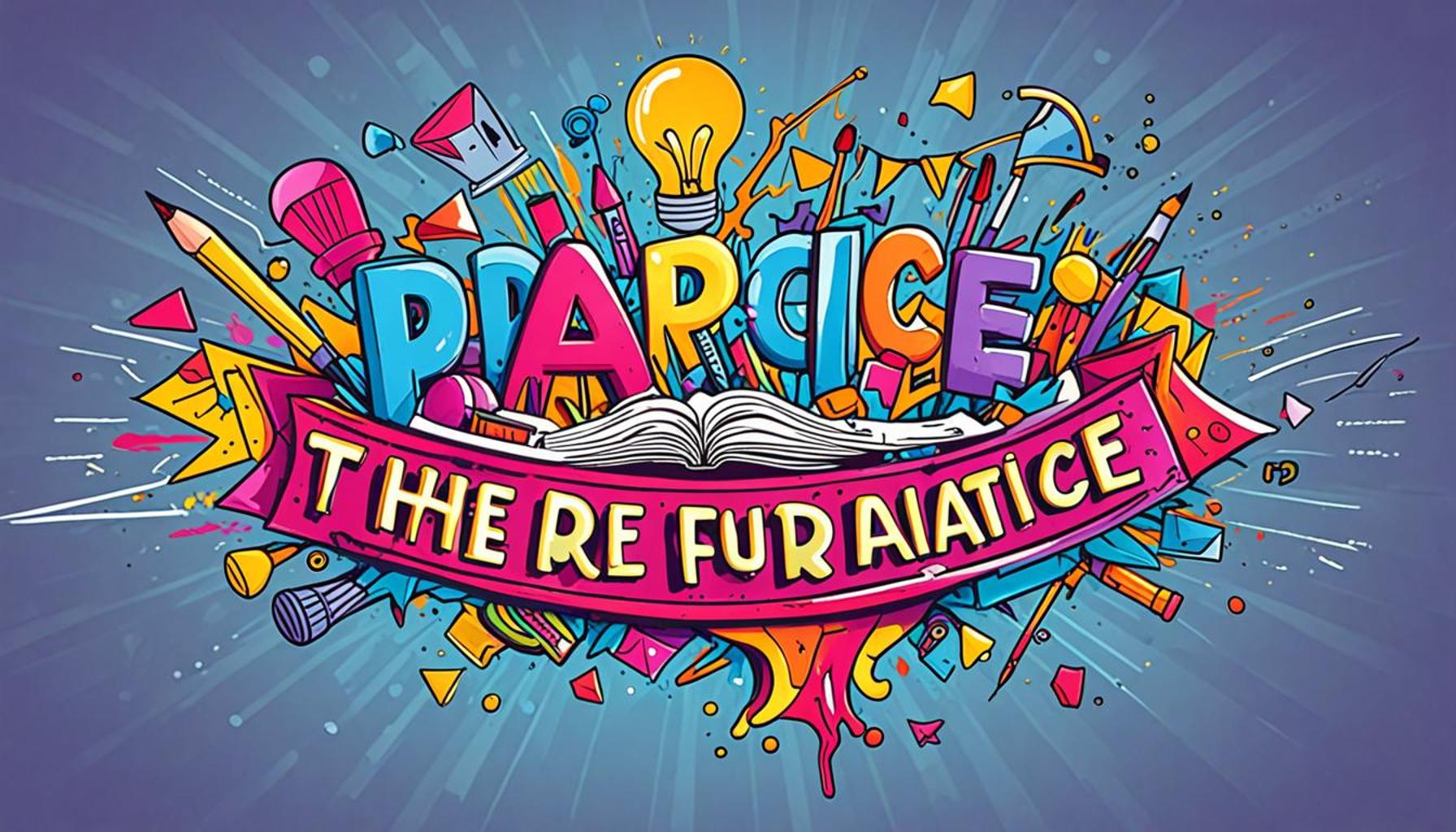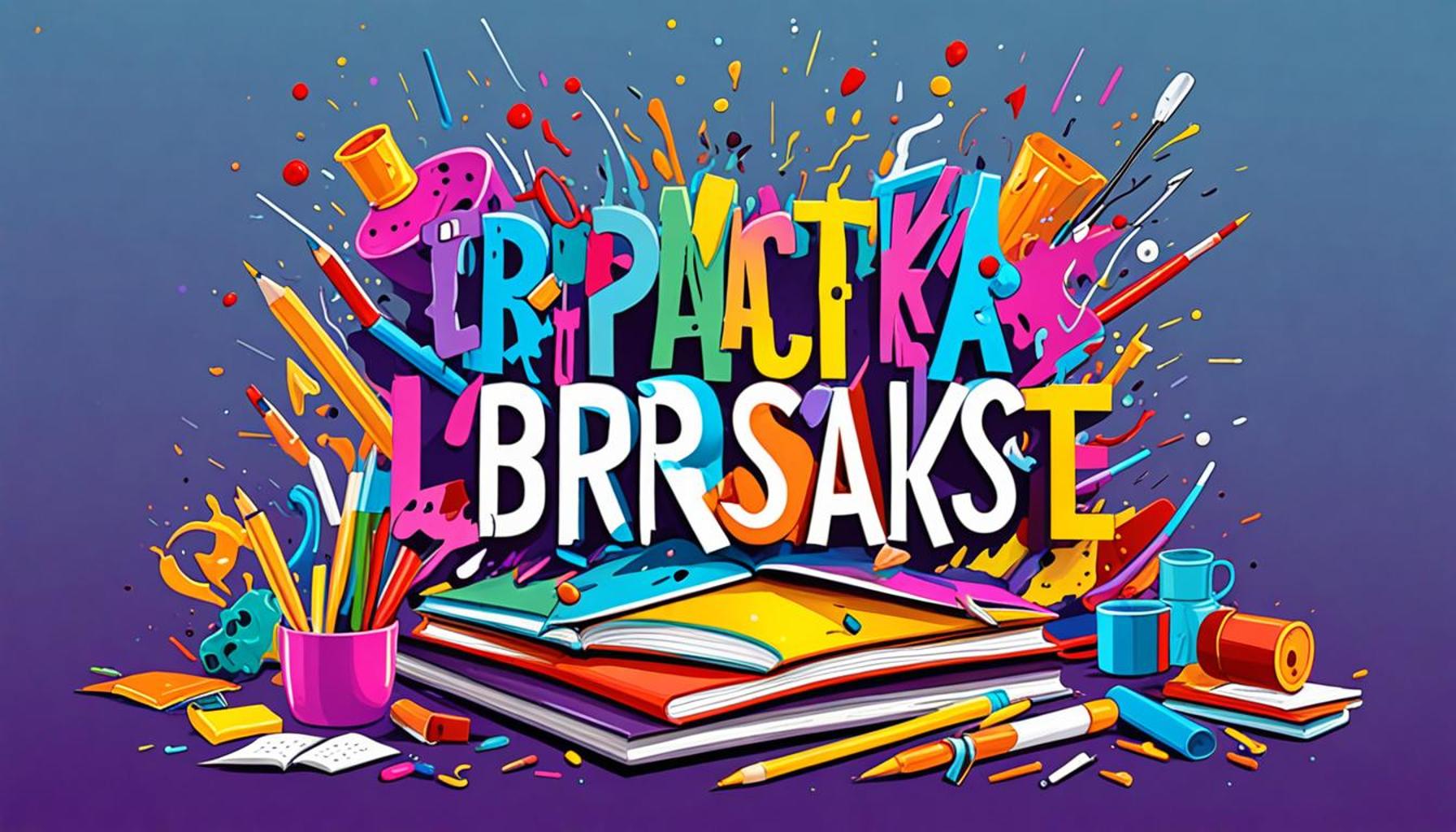Unlock Faster Learning How to Use Feynmans Technique Effectively

The Benefits of Applying the Feynman Technique
Imagine navigating the complexities of mathematical theories or intricate scientific concepts with newfound clarity. The Feynman Technique can empower learners to break down challenging topics into digestible pieces, fostering a deeper comprehension for students and professionals alike in Nigeria’s educational framework.
This technique focuses on the principle that teaching others is one of the most effective methods to enhance your own understanding. By articulating concepts in your own words, you not only combat confusion but also solidify your grasp on the material. Here’s how applying the Feynman Technique can transform your learning experience:
- Identify Knowledge Gaps: When attempting to teach a concept, you may realize there are areas where your comprehension is lacking. This recognition prompts further investigation and clarification, ensuring that no stone is left unturned.
- Clarify Understanding: As you simplify the subject for a hypothetical student, you distill complex information into clearer statements. This process challenges you to rethink your knowledge and redefine your perspective.
- Boost Long-term Retention: The act of putting knowledge into your own words helps commit the information to memory. Research suggests that teaching others can significantly enhance memory retention compared to just passive reading or listening.
For instance, let’s consider a university student in Nigeria studying physics. Instead of merely memorizing formulas, this student could apply the Feynman Technique by explaining Newton’s laws of motion to a peer. This exercise encourages them to translate technical jargon into relatable language, such as discussing how these laws manifest in local contexts, like the motion of a danfo bus navigating Lagos traffic.
At every educational level, from primary schools to universities, the Feynman Technique serves as a vital resource, particularly in environments where access to advanced teaching tools and technology might be restricted. By enabling students to harness their understanding creatively, it fosters an academic environment where learning feels less daunting and more accessible.
In this article, we will illustrate how to effectively implement the Feynman Technique in various scenarios, providing practical tips and real-life examples that showcase its potential impact. Whether you’re preparing for an examination or looking to master a new skill, this approach offers a transformative path to academic success in Nigeria’s diverse and rich educational landscape.
CHECK OUT: Click here to explore more
Steps to Implementing the Feynman Technique
Unlocking faster learning through the Feynman Technique requires a structured approach that will guide you in teaching what you’ve learned. This powerful method is not just a learning tool; it’s a transformational strategy that allows for more profound understanding and retention. Here’s a step-by-step guide on how to effectively implement the Feynman Technique:
Step 1: Choose a Concept
Start by selecting a concept or topic that you wish to understand better. It could be anything from the principles of economics affecting Nigeria’s markets to the scientific theories behind agricultural innovations. The key is to choose something that intrigues you or needs clarity.
Step 2: Teach It to a Peer
Imagine you are teaching the concept to a child or a complete novice. This approach compels you to break down complex ideas into simpler, more digestible segments. For instance, if you’re grappling with the concept of supply and demand, try to explain it using real-life examples—like how the price of tomatoes fluctuates in your local market based on availability and demand.
Step 3: Identify Gaps in Your Understanding
As you attempt to convey the information, take note of where you struggle. These gaps indicate areas where your knowledge is lacking. For example, while explaining Nigeria’s economic policies, you may find that you cannot adequately articulate how these policies impact local businesses. Use this realization as a prompt to delve deeper into the subject.
Step 4: Review and Simplify
Once you have identified your knowledge gaps, revisit the material and seek out additional resources. Books, articles, and online courses can offer different perspectives that clarify complex subjects. Then, return to your explanation and simplify it even further, ensuring it’s comprehensible. This revision process helps solidify your understanding while reinforcing your learning.
Step 5: Repeat the Process
Learning is a continuous journey. Repeat the Feynman Technique with new topics or revisit earlier concepts periodically. This repetition strengthens your mastery and builds a more robust knowledge foundation. As you become accustomed to this method, you’ll notice that you can link ideas across various subjects, enhancing your overall intellectual capability.
Finally, remember that the Feynman Technique is meant to be dynamic. Engage in discussions with peers or study groups to test your explanations and gain insights into alternative interpretations. By actively participating in dialogues, you not only enrich your learning but also create a support network that further encourages inquiry and curiosity.
Implementing the Feynman Technique is not merely an academic exercise; it is a gateway to a more profound engagement with the world around you. As you unlock faster learning, you’ll find that this approach transforms your approach to education and lifelong learning, equipping you with the confidence to tackle even the most intricate of subjects.
| Advantage | Description |
|---|---|
| Enhanced Understanding | Using Feynman’s Technique promotes a deeper grasp of complex subjects by focusing on simplification. |
| Effective Retention | This method aids in long-term memory retention as it encourages learners to explain concepts in their own words. |
| Identifying Gaps | Feynman’s Technique helps identify knowledge gaps by challenging your understanding through teaching others. |
| Boosts Engagement | This technique fosters active participation in learning, making it more enjoyable and less monotonous. |
Incorporating Feynman’s Technique into your learning process is not just advantageous; it’s transformative. Imagine tackling a dense concept and breaking it down until you have a clear, retellable summary. The art of simplification empowers learners to adopt a proactive role in their education. By teaching the material as if to a novice, the learner can spot the nuances that may have long been misunderstood or overlooked.The key to this method lies in its engagement with the material. Effective retention isn’t merely rote memorization; it’s about creating connections that solidify the information in your mind. Feynman’s approach reminds us that engaging actively with a subject leads to a mastery that is not only deep but also flexible enough to be applied in various contexts.The best part? It’s not difficult to implement. By employing techniques such as drawing diagrams, teaching peers, or creating flashcards, learners can leverage Feynman’s principles in countless applications. Thus, inviting deeper exploration and understanding of any topic becomes a significant outcome.
CHECK OUT: Click here to explore more
Building on the Feynman Technique: Tips for Mastery
While implementing the Feynman Technique is a rewarding journey, there are additional tips and strategies that can streamline your learning experience and further enhance your understanding of complex topics. Here are some key practices to incorporate as you work through the Feynman Technique:
Utilize Visual Aids
Visual aids can make abstract concepts more relatable and easier to grasp. Try creating diagrams, charts, or mind maps that visually represent the information you’re learning. For instance, if you’re studying the effects of inflation in Nigeria’s economy, draw a flowchart that outlines how changes in inflation rates impact purchasing power, savings, and investments. These visual interpretations not only aid retention but also provide a reference point for when you revisit the material.
Encourage Questions
When teaching your learned concepts, create an environment that encourages questions. Allow your peers to probe deeper or challenge your explanations. This questioning can unveil new angles and insights into the topic, which can further bolster your understanding. For instance, if you are explaining how agricultural practices can affect food security, be ready to tackle questions about climate change impacts or government policies affecting farmers in Nigeria. Such discussions will broaden your comprehension and make the learning process more dynamic.
Incorporate Practical Applications
Tying theoretical knowledge to real-world applications solidifies your comprehension. Seek out ways to apply what you learn in practical scenarios. For example, if you are learning about supply chain management during your coursework, consider how local businesses, like street vendors and supermarkets, operate within the supply chain in your community. Your ability to relate theory to practice not only enhances your understanding but also allows you to appreciate the relevance of your studies.
Revisit and Revise Concepts Regularly
Periodic revision is an essential component of mastering any subject. Schedule regular reviews to revisit key concepts and explanations you’ve previously learned. This ensures that knowledge is not only preserved but continues to evolve. Creating flashcards or summary sheets can aid in this process. For instance, summarizing the key elements of cash flow management in a compact format can serve as a rapid reference guide that facilitates ongoing learning.
Group Learning Sessions
Collaborating with peers can magnify the benefits of the Feynman Technique. Organize group learning sessions where everyone shares their understanding of different concepts. Each member teaching a fragment to the group allows for diverse perspectives and explanations, leading to deeper insights. Engaging with fellow students can be particularly beneficial in subjects like mathematics or science, where peers can provide varied methods of solving problems.
Stay Open to Exploring New Resources
Embrace a mindset of continuous learning by seeking out various resources beyond textbooks. Documentaries, podcasts, and educational videos can offer fresh perspectives on familiar subjects. For instance, if you’re curious about Nigeria’s history of oil production, listening to a podcast detailing the socio-economic impacts can provide context that textbooks may not cover. These additional resources can help you connect dots and enrich your understanding of the topic.
By embracing these strategies while utilizing the Feynman Technique, you can unlock accelerated learning and foster an enduring passion for knowledge. The intertwining of theory and application creates a fertile ground for critical thinking, setting a foundation for lifelong learning and personal development.
SEE ALSO: Click here to read another article
Conclusion: Embracing the Power of the Feynman Technique
In conclusion, the Feynman Technique stands as a powerful tool for anyone eager to unlock faster learning and deepen their understanding of complex subjects. By breaking down intricate ideas into simple terms, teaching them to others, and incorporating practical applications, learners can solidify their knowledge and foster a genuine passion for the subject matter. The combination of visual aids, questioning, and collaborative learning not only enhances comprehension but also transforms learning into a more engaging process.
As you embark on your journey with the Feynman Technique, it is vital to remain mindful of the resources at your disposal. For Nigerian students, leveraging local examples can bridge the gap between theory and practice, making lessons more relatable. Whether you’re examining the nuances of trade policies affecting local farmers or understanding the socio-economic landscape, contextualizing your studies will elevate your learning experience.
Moreover, regular revision and exploration of diverse materials, such as podcasts or documentaries, deepens your grasp of concepts while keeping the learner’s journey exciting. Ultimately, the Feynman Technique is not just about quick learning; it is about cultivating an enduring intellectual curiosity that will serve you throughout your academic and professional pursuits. By embracing these strategies, you can transform your approach to learning, set a strong foundation for critical thinking, and unlock a world of knowledge that continually inspires.


